Piolet d'Or 2011, winners, diversity and the challenges of alpinism
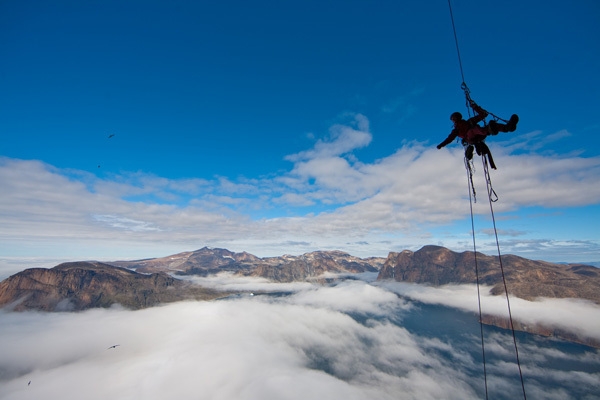
 1 / 68
1 / 68 arch Piolet d'Or
arch Piolet d'Or
Piolet d'Or 2011 or, put in other words, the diverse aspects of alpinism. Just like last year the Piolet d'Or went to two expeditions, but this edition came along with a novelty: never before since the introduction of the multiple awards had the winners been so diverse. Which leads us to conclude "and yet it moves", this modern alpinism... On one hand there is the world of the big rock walls, with the irresistible and tried-and-tested "Belgian band" comprised of brothers Nicolas and Olivier Favresse and Sean Villanueva, joined for the occasion by Ben Ditto from the USA and the unmissable 75-year-old British skipper Bob Shepton. While on the other hand there is alpinism at altitude, one which confronts all types of terrain (ice, mixed and rock) with a extremely lightweight and smiling Japanese team comprised of Yasushi Okada and Katsutaka Yokoyama.
The former (the jovial team of sailors, alpinists and musicians as they've been defined by the mainstream press) were the protagonists of a trip which mixed sea, icebergs and pure and clean climbing up the extraordinary big walls along Cape Farewell, on Greenland's south and west coast. The latter, up Mount Logan in Alaska's immense and freezing expanse, demonstrated the raw power of Asian alpinism once again, and the timeless charm and beauty of the most classic alpine style. So much so that the recipient of the Lifetime Achievement Award, the great Doug Scott, commented with satisfaction that the form of alpinism he and his generation had carried out had been "the right one". The very same "alpine style" which, unsurprisingly, ids represented by two clear leaders in the first two editions, namely Walter Bonatti and Reinhold Messner, to which Riccardo Cassin must be added, as he should certainly have received this award during the last year of his life.
It's superfluous to say that, despite being completely different, both adventures awarded with the golden ice axe are definitely prize worthy. The Favresse & Co team established nine new routes, including The Devil's Brew which takes a vertiginous 850m line up the Impossible wall, starting directly from the sea climbed "clean" in 10 days through virgin territory. It is worth noting that on the nine first ascents, only a single bolt was placed. Okada and Yokoyama's journey into the unknown in perfect alpine style took place on the immense SE Face of Mount Logan. 2500m high and up to an altitude of 5959m, this tested them with all the variables of pure alpinism and was climbed with three bivouacs. The two Japanese mountaineers rose to this challenge perfectly, so much so that their ascent had previously netted them the Piolet d'Or Asia.
It has to be said that alpine style and different terrain is the common denominator for the other 4 nominations, too. These included the extraordinarily long 72 hour non-stop ascent of Mount Foraker (5304m) in Alaska by America's Colin Haley and Norway's Bjorn-Elvind Artun, as well as the massive 1600m high first ascent up the West Face of Vasuki Parbat (6792m) in India. This was breached by British mountaineers Malcolm Bass and Paul Figg in 10 days and theirs is the second ever ascent of the mountain. The others nominated for 2011 included the new 2500m climb up the East Face of the beautiful and secluded Mount Edgard (6618m) in China by Bruce Normand from Britain and Kyle Dempster from the USA, as well as, last but by no means least, the great new route up the SE Face of Lunag I in Nepal by Frenchmen Mathieu Detrie, Mathieu Maynadier, Sebastien Ratel and the late Max Belleville.
A "triumph" therefore for what has become the Leitmotif of the last few years: small teams on pretty-much unheard of mountains, journeys into the unknown marked by extreme uncertainty, with a start from the base of the route and single, non-stop journey to the summit. In synthesis, that form of alpine style described by Doug Scott and which has become the hallmark of cutting-edge alpinism. Having said that, despite its obvious differences the rock journey by Favresse, Ditto and Villanueva won over almost everyone's hearts. So much so the the great alpinist and impeccable Jury president Greg Child, in reply to Kay Rush's question during the Lifetime Achievement ceremony at Courmayeur about which of the 6 expeditions he'd liked to have taken part in, replied "definitely the Big Walls in Greenland" adding immediately "also because the others are too frightening..."
So if you want, this reply takes into account the biggest difference of these two sides to alpinism. The Favresse & Co. journey convinced as a whole: the sailing boat which acted as a base camp, the stratospheic beauty of those big walls which jut out from a sea littered with icebergs; the purity of the climbs and the truly unique spirit of adventure of these climbers-cum-sailors who accompanied their traverse and long stay on the wall with their irresistible jam sessions, uniting their climbing souls with that of musicians. Which begs the question whether all of this has to do with alpinism... If this contagious joy and artistic vein is a part of the greater tradition of mountaineering. We believe it is. Just like we believe that big walls, wherever they might be (even in the Alps) can still be the scene of great alpinism. Albeit different from that carried out at altitude, but nevertheless still alpinism. Which explains why the dreams of an entire generation were fuelled by "Big Wall Climbing", a sort of Bible which explores the mountains from the Dolomites to Yosemite. Written, as it happens, by Doug Scott.
In short, if these Piolets d'Or have launched a message, then it seems - and we truly hope this to be the case - that the doors have been opened to diversity, to imagination and all the variables of our current day. The ever-smiling Japanese alpinists fit this bill perfectly, too, as we're certain that the oriental outlook and their way of interpreting alpinism will manage to further diversify and enrich the mountain climbing panorama. Just as we're certain that alpinism must encompass a vision which goes well beyond the simple mountain faces, which finds its foundations in what goes on elsewhere.
This was explained clearly and witnessed by Doug Scott in person, for the British mountaineer has been long been engaged in charity work in Nepal's mountains. Based on the principle of actively involving the local population in sustainable development projects, the aim is also to prevent the "exodus" from the mountains towards the cities, to avoid the mountain regions from being abandoned wholly. A desolating example of this phenomena can be found right at our footstep, here in the Alps. In the end this is another message which alpinism should contain. An alpinism which is, arguably, more global and capable not only of looking forward to our modern day, but is also capable of providing moments to meet up and produce a wider vision, as during these Piolet d'Or days at Courmayeur and Chamonix, in the shadow of the great Mont Blanc.
Yes because, awards and celebrations aside, once again it was the encounters, the sharing of experiences and knowledge which turned out to be the most beautiful thing of all. This was underlined constantly by the nominees, winners, members of the Jury, and also Doug Scott and great alpinists such as Walter Bonatti and Chris Bonington, whose discussions went well beyond various styles of climbing and how routes should be graded. Numerous moments proved this clearly, one of the most beautiful being Chris Bonington's presentation of Doug Scott in Chamonix. This certain Lifetime Achievement candidate proved once again that he is a true Sir: their embrace was truly moving.
Another moving moment was Walter Bonatti e Scott's embrace on Saturday evening at Courmayeur. The Italian, with the overpowering strength which distinguishes him, recognised in Scott's alpinism his own alpinism. In doing so he confirmed the standing ovation, initiated by the nominated alpinists and jury, which the spectators offered as a tribute to the great British alpinist. The Piolet d'Or is also this: seeing these "fathers" and "children" of alpinism meet up. Seeing the children (the nominated) applauding while at the same time conscious of the fact that they must and can move forward. Taking the right, which all children have, of continuing, of choosing their own path. If you want, as the climbers did on the big walls in Greenland. For an alpinism which interprets today and which can only be carried out by them. Because it's only like this that today's alpinism can come of age and think about the future.
Talking about the future and alpinism growing up and become an adult, we'd like to conclude with a novelty introduced on Saturday evening during the closing ceremony. The mayors of Courmayeur and Chamonix will promote the idea that alpinism become recognised as a world heritage by the UNESCO. The request is for alpinism to be added to the list - recently created - of Intangible Heritage for its "exceptional value in enriching culture and society." Walter Bonatti and Doug Scott immediately added their support to this initiative while still on the Coutmayeur stage, and the mayor of this Italian town explained "It's an initiative for alpinism as a whole, for all the world's mountains." And, we'd like to add, it's a difficult initiative. A challenge, beautiful and difficult, which will spur alpinism into becoming even greater yet. Yes, into become more grown up and conscious.
JURY 2011
Greg Child (Australia, alpinist), Jury President
Enrico Rosso (Italy, alpinist)
Yannick Graziani (France, alpinist)
Simon Anthamatten (Switzerland, alpinist)
Michael Pause (Germany, journalist)
Hiroshi Hagiwara (Japan, journalist)
WINNERS 2011 - JURY MOTIVATION
Greenland Big Walls Expedition
Sean Villanueva, Nicolas & Olivier Favressse (Belgium) and Ben Ditto (USA), boat captained by Bob Shepton (UK - 75 yrs).
This was innovative big wall climbing with a difference - in excellent style, using neither bolts nor pitons, and traversing the peaks after the climbs. In the popular sport of big wall climbing, this showed that it is possible to make these ascents completely clean. In addition to a high technical level, the team approached by yacht into unexplored areas and showed huge camaraderie.
Mount Logan South East Face
Yasushi Okada and Katsutaka Yokoyama (Japan).
This was a new route on a very remote 2,500 metre face, undertaken with meticulous preparation. The climbers travelled over a wide area to find routes for acclimatisation, and only embarked on the route after careful planning to avoid objective danger. The ascent epitomises climbing in modern alpine style, travelling at speed on unknown terrain for a route one and a half times the height of the Eiger North Face. The pair completed the long connecting ridge to the East summit.
| Links Planetmountain | |
| Piolet d'Or 2011: Mount Logan and Greenland Big Walls the winners | |
| Piolet d'Or 2010, the winners | |
| Piolet d'Or 2009, the winners | |
| News Piolet d'Or | |
| Links www | |
| www.pioletsdor.com | |



 Copia link
Copia link

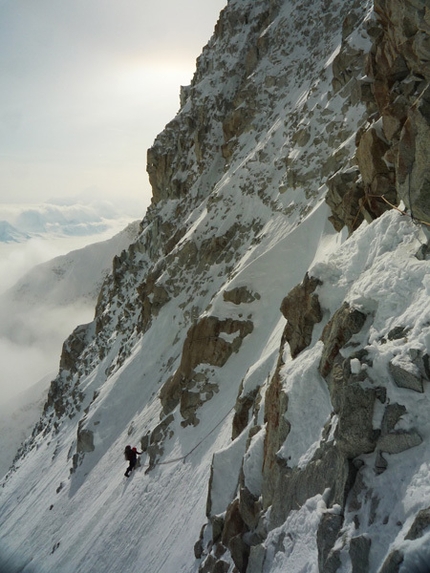
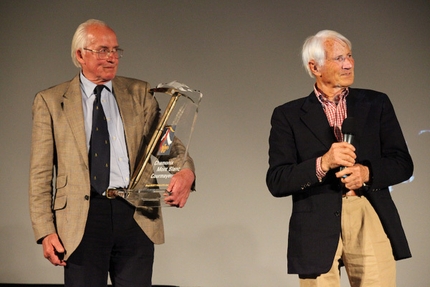
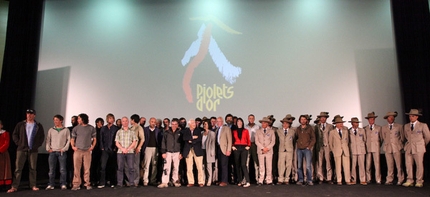
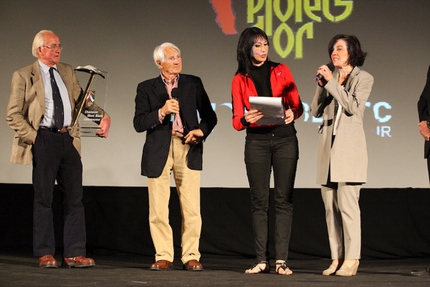
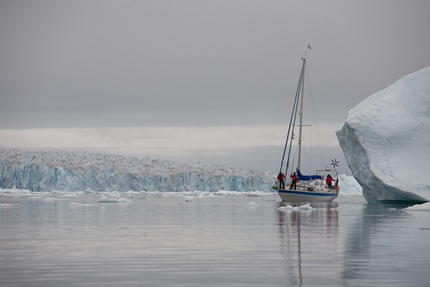
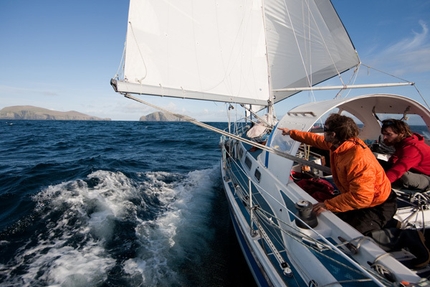
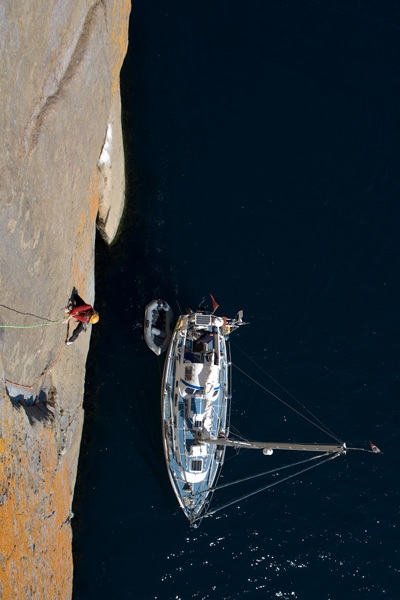
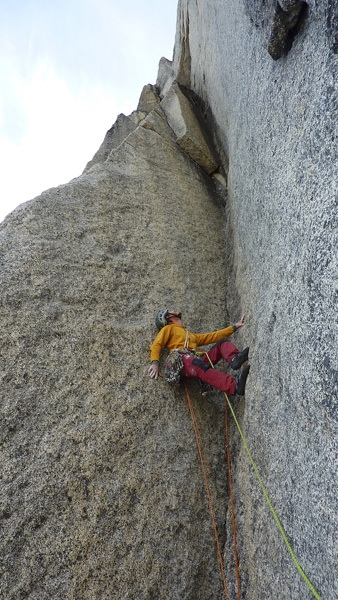
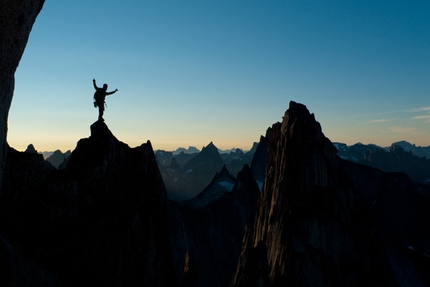
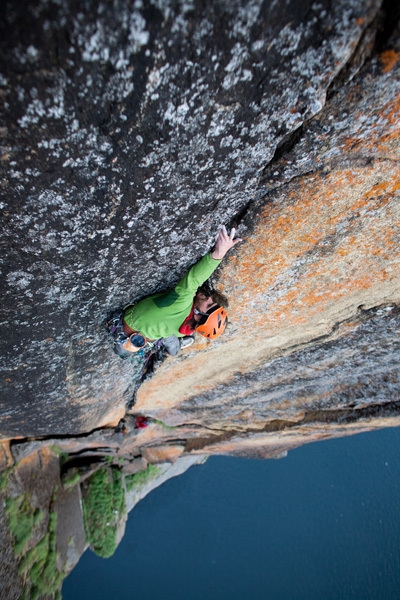
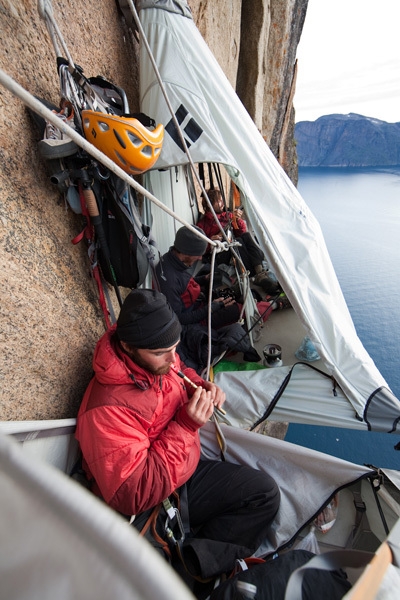
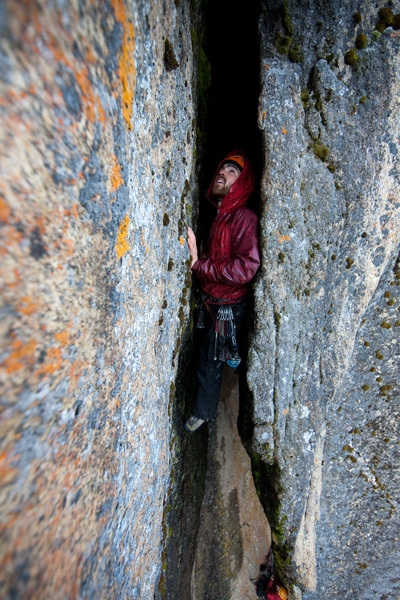
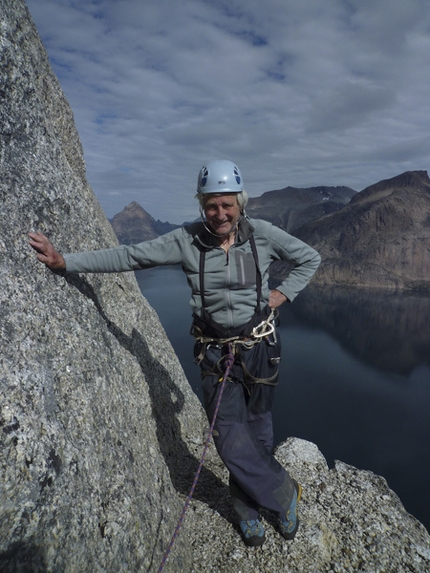
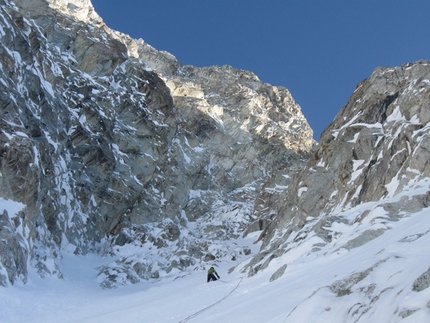
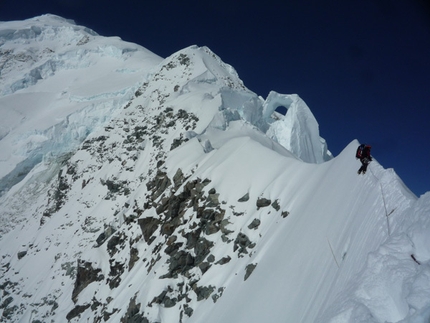
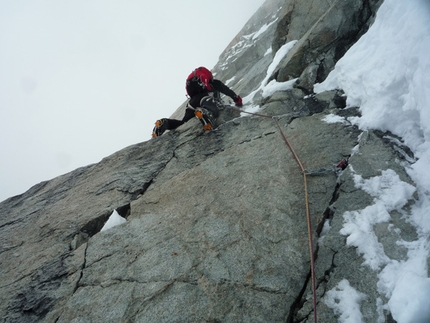
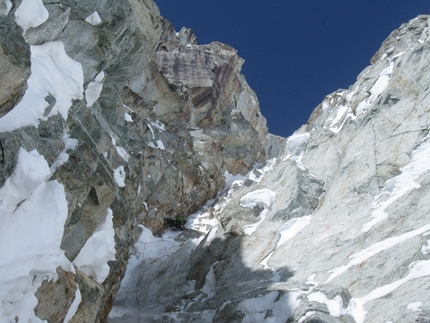
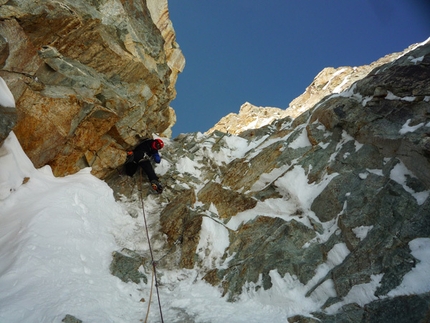
 See all photos
See all photos






















